

An appreciation of the remarkable work of two forgotten artists in our next
Rare Books & Works on Paper Sale
February 13th & 14th

Polperro harbour by Frederick Roberts Johnson
In 1924, Frederick Roberts-Johnson and his close friend, artist Arthur Wragg, visited Polperro, in Cornwall, and became enamoured with the village.
The two young friends had met at art school as teenagers. They fell in love with Polperro and rented a cottage there each summer throughout the 1930s, becoming integral members of the local community. Johnson acquired an old stone net loft in the village for use as a studio, where he created a series of fishermen's portraits that were displayed in the Polperro Museum. Drawn to the area's tranquil beauty and bohemian community, the two artists formed an even closer friendship that influenced their creative output.
Polperro's rugged coastline, charming cottages, and vibrant artistic circle there at the time provided inspiration for their work, particularly Roberts-Johnson’s, while the remote setting allowed them to explore new ideas free from the distractions of urban life. Johnson, a landscape painter, and Wragg, a socially conscious illustrator, found common ground in their desire to use art as a means of communication and reflection.
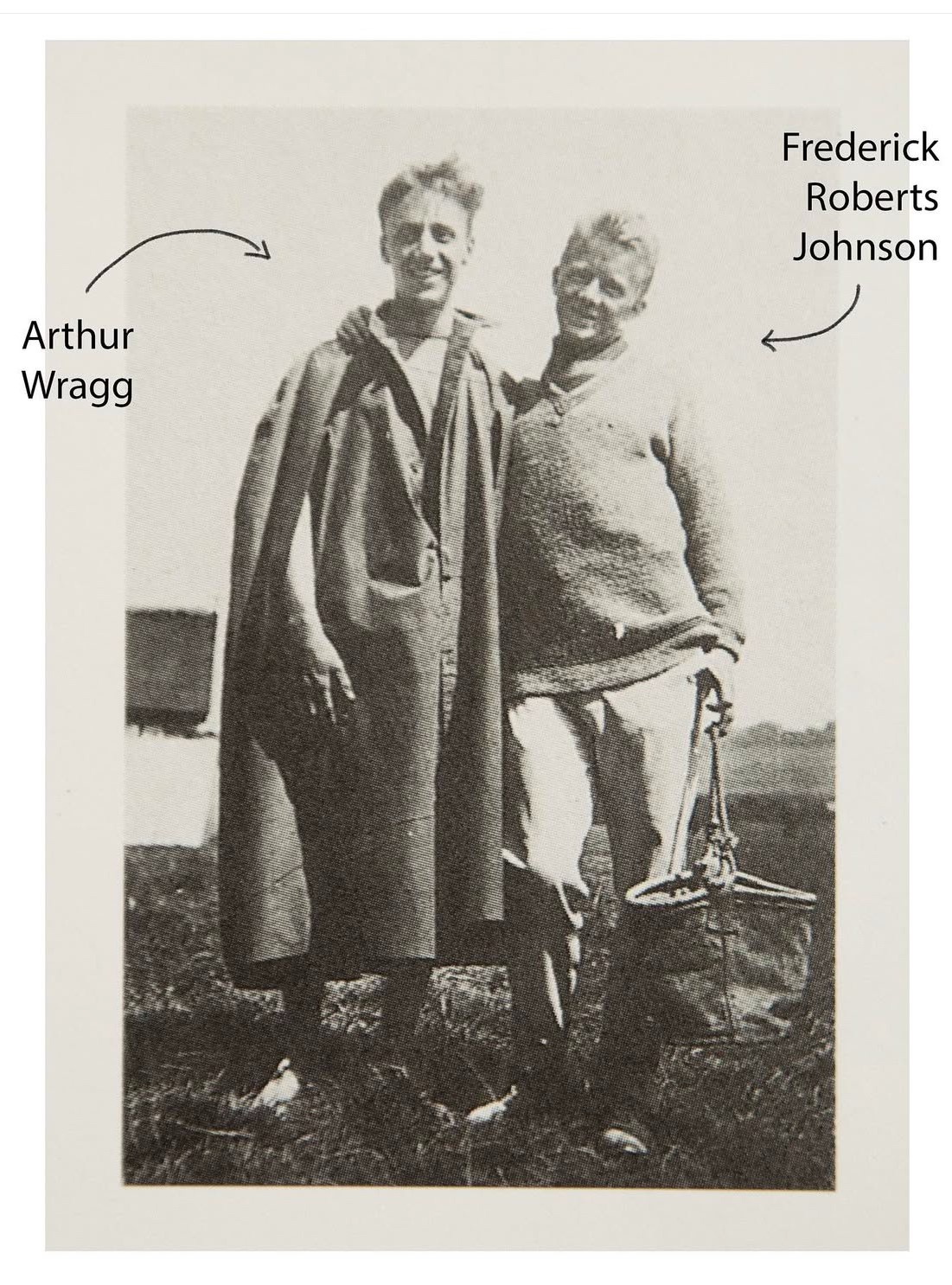
Arthur Wragg (3 January 1903 – 17 August 1976) was a British illustrator renowned for his stark, poster-like artwork that often addressed themes of social alienation and spiritual emptiness. His commitment to using art as a medium for social commentary distinguished him from his contemporaries, as he chose publication over traditional 'fine art' media to reach a broader audience.
Born in Eccles, Greater Manchester, Wragg was the son of George Arthur Wragg, a travelling soap salesman, and Alice Smethurst Eckersley, a telegraphist from Salford.
He grew up in Harrogate, Yorkshire, alongside his sister, Amy. Wragg received his artistic training at the Sheffield School of Art before relocating to London to pursue a career as a freelance commercial artist.
In the 1920s, Wragg primarily contributed to women's magazines, providing illustrations that showcased his developing style. As his career progressed, he expanded his repertoire to include book jackets and work for left-wing newspapers such as Tribune and Peace News, where he also contributed cartoons.
His illustrations often accompanied literature and pamphlets focusing on Christian socialism, pacifism, and social justice.
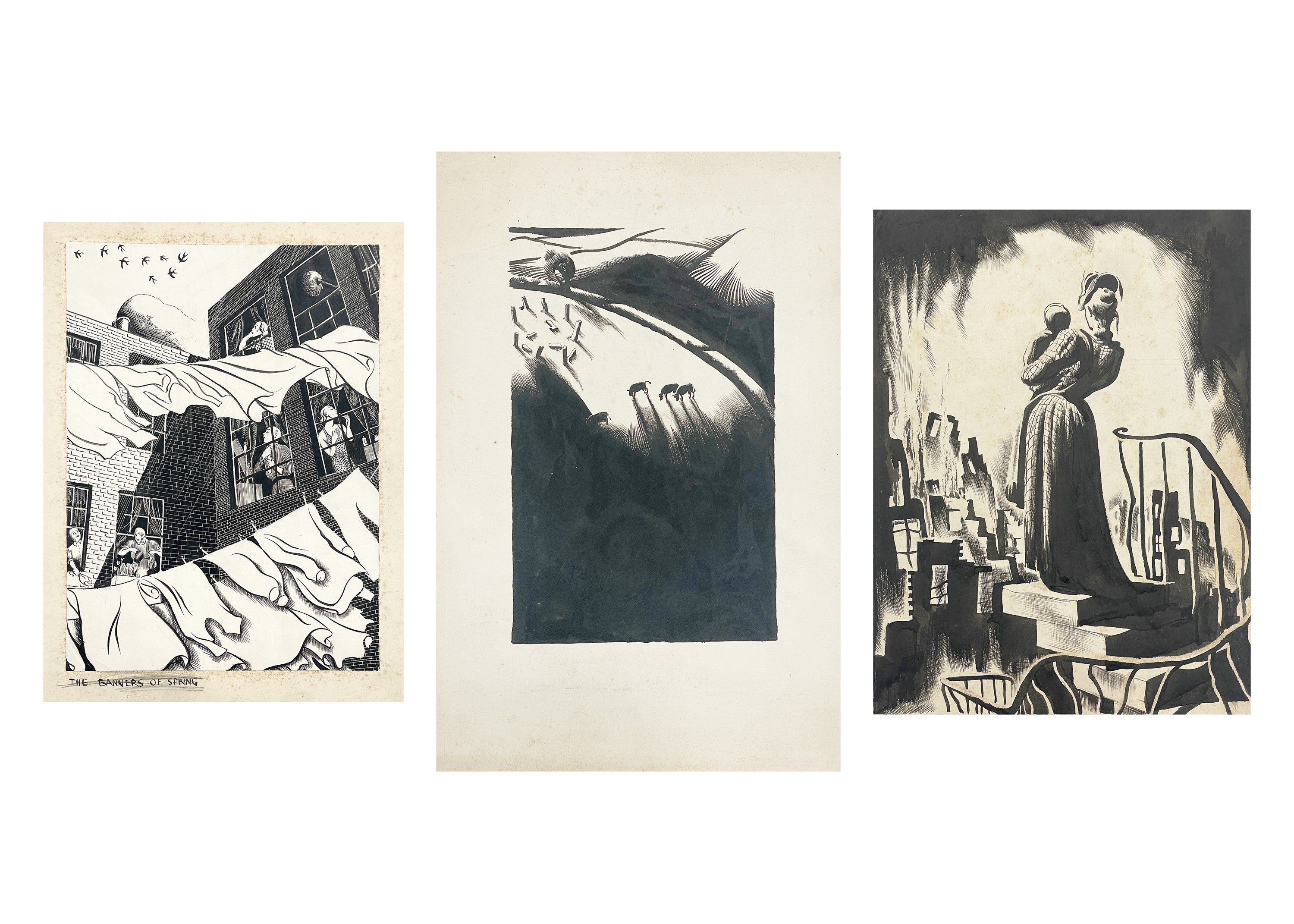
The socioeconomic challenges of the Great Depression in the 1930s deeply influenced Wragg's work, leading to the creation of several books where he illustrated biblical texts with a politicised perspective. Notably, The Psalms for Modern Life (1933) featured simplified block-style and dramatic chiaroscuro effects, making the illustrations resemble woodcuts. This style effectively conveyed themes of deprivation, justice, and conscience, reflecting the persistence of spiritual values in an alienated urban-industrial environment.
'The Psalms for Modern Life' was a ground-breaking work and a huge success, reprinted ten times within the first three years of publication. It also raised Wragg's profile to the extent that his work began to be compared to that of William Blake, William Hogarth and Francisco de Goya.
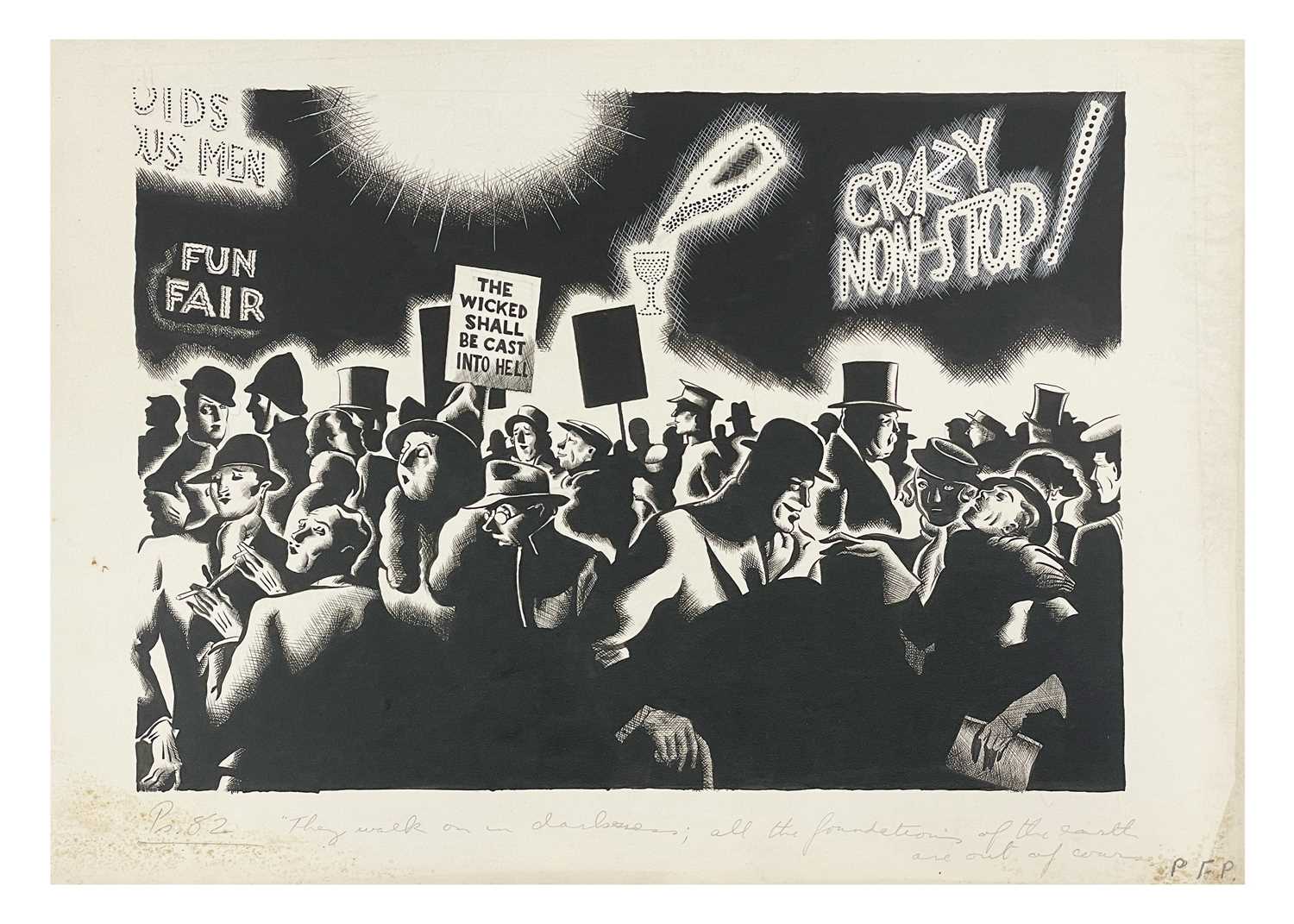
Illustration from 'The Psalms of Modern Life'
Wragg was a close associate of the pacifist preacher Canon Dick Sheppard and in 1935 became a sponsor of the Peace Pledge Union. He was a conscientious objector during World War II and faced imprisonment for his stance, after which he transitioned to teaching art in schools. Following the war, Wragg returned to freelance work, with his style evolving to incorporate more airy, fantastical, and sometimes surreal elements.
Despite the sombre nature of some of his work, Wragg had a great sense of humour and created lightweight drawings, jacket covers for novels and much else. He and Johnson enjoyed a busy social life during winters spent in London. After the War, Wragg moved into a flat in London's Old Brompton Road, which he shared with his partner Sigurd, and subsequently David. He remained in demand as a commercial artist, obtaining regular commissions from the Decca Record Company for their album covers. While he continued to produce satirical work reflecting the post-war political climate of fear and uncertainty, it is his hard-hitting black and white images from the 1930s for which he is best known.
Arthur Wragg died in 1976.
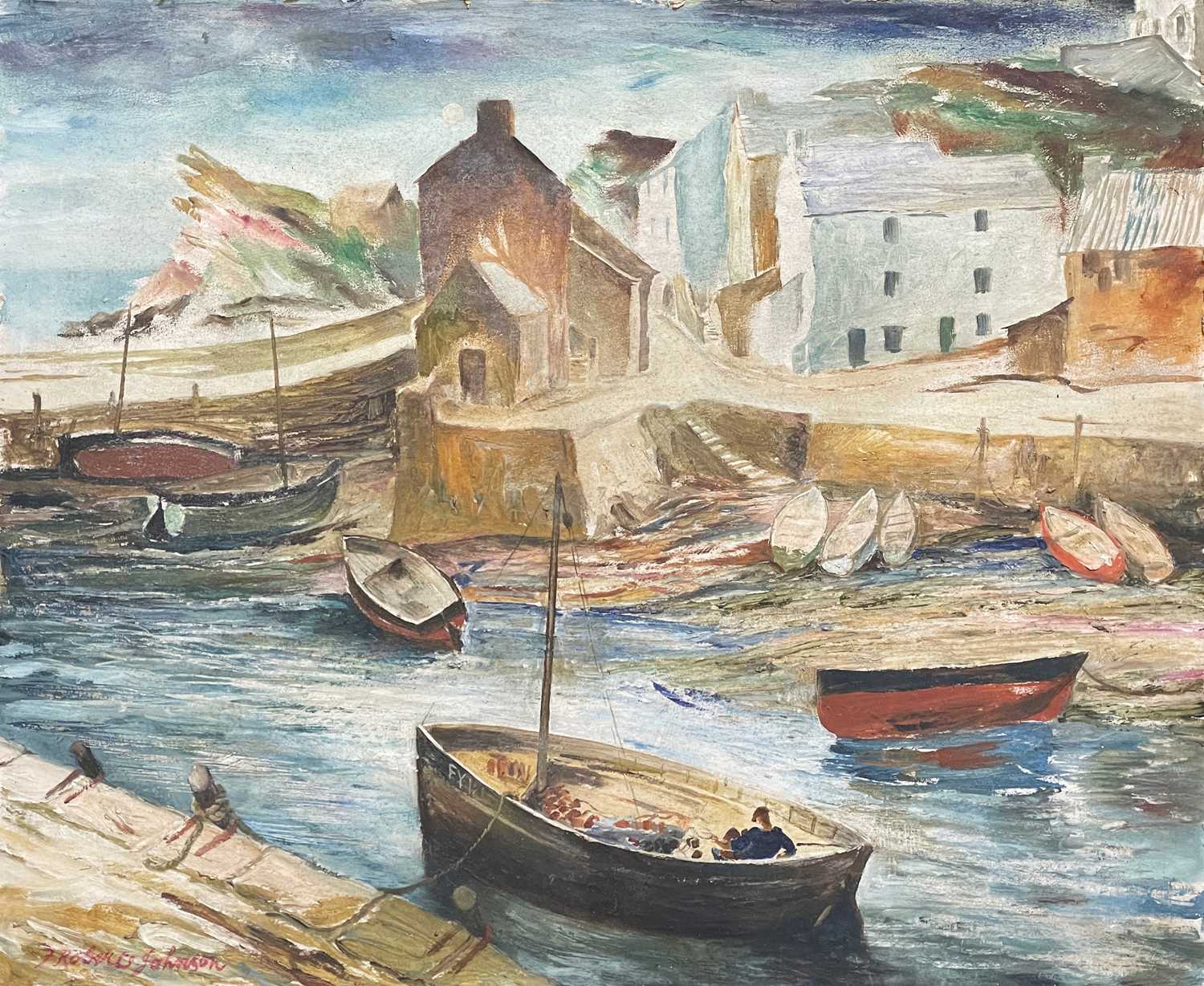
Polperro harbour by Frederick Roberts Johnson
Frederick Roberts Johnson (1900–1986) was a British illustrator and painter, renowned for his cartoons, caricatures, and commercial art. He often signed his work with pseudonyms such as 'Essex'—inspired by his admiration for the American Essex automobile—and occasionally 'Sax' or his initials 'FRJ'.
In the late 1920s and 1930s, Johnson's illustrations featured prominently in publications like Punch, Everyman, and Time and Tide, a weekly left-wing literary review magazine. His most notable commercial work included a series of caricature portraits for the Punch's People in Punch series in the mid-1930s, signed 'Essex', and advertisements for 'Abdulla' cigarettes displayed in periodicals, London buses, and the Underground.
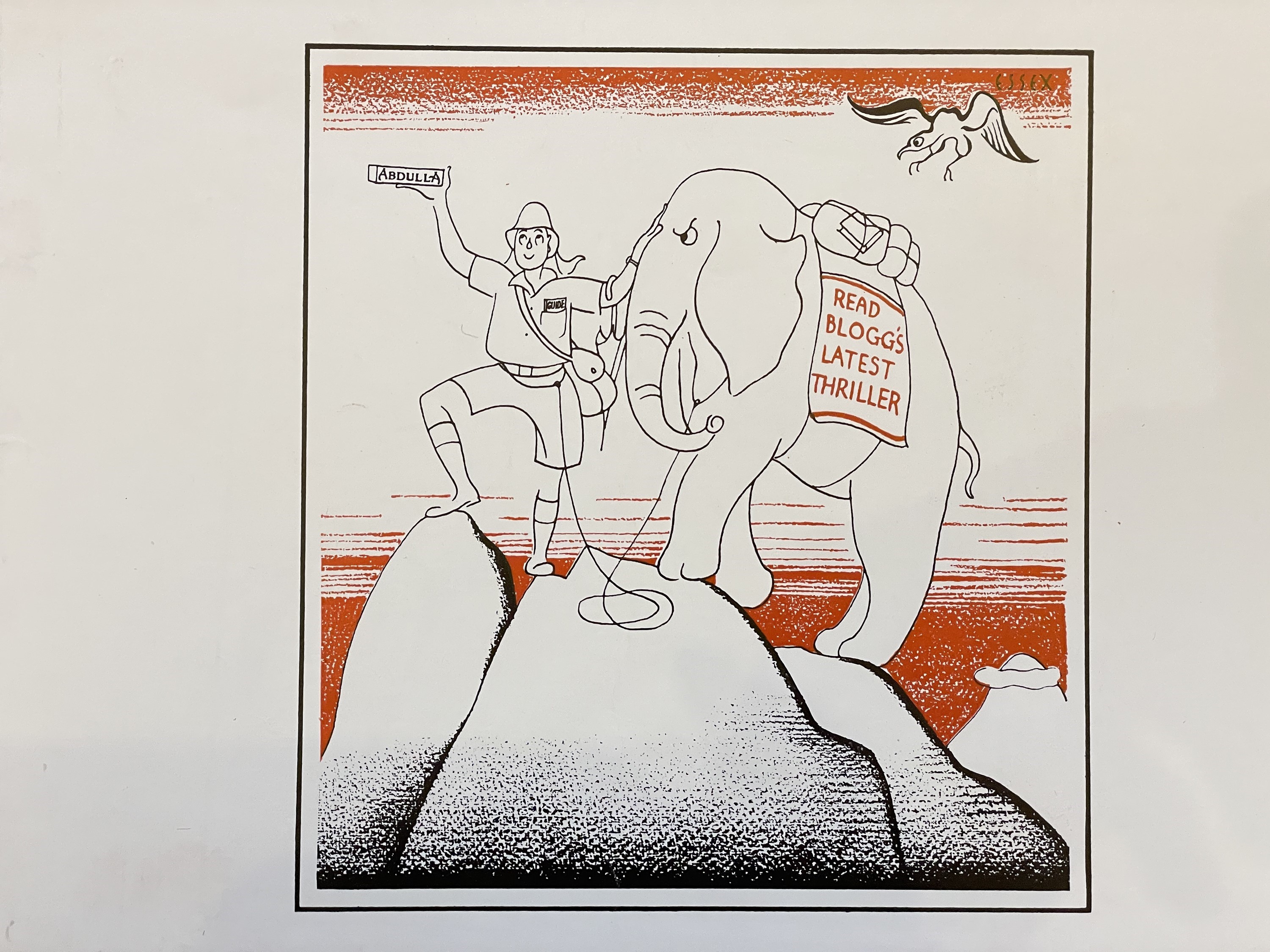
Design for Abdulla's cigarettes
Alarmed by the rise of fascism, Johnson became actively involved in the left-wing newspaper The Tribune, contributing political cartoons alongside Wragg. During World War II, he served in the Home Guard and, with an engineer friend, manufactured aircraft and weaponry parts, which exempted him from conscription.
In 1942, Johnson married Mimosa Wilson Cameron, an aspiring opera singer he met in Polperro. They settled in the village, raising two daughters, Kirsten and Prudence. The family later moved to Totnes in 1957 but maintained a property in Polperro for weekends and holidays.

Despite his commercial success, Johnson created approximately 250 easel paintings, which he chose not to exhibit or sell, painting purely for pleasure. His work encompassed a wide range of genres, including still life, street scenes, and harbour scenes, with some pieces showing the influence of cubism and surrealism.
Lay's are delighted to be handling the sale of a forgotten archive of work by these artists, rediscovered in a shed in Polperro and preserved by Judy Brooks, an ex-pupil of Arthur Wragg, and the author of 'Arthur Wragg, Prophet and Jester' published in 2001, an excellent resource on the artist's life.
We have over 200 lots, many containing multiple works. The breadth and quality is breathtaking. Both were very fine draughtsmen and it has been a pleasure and a priviledge to discover their work and present them once again, to the wider audience they deserve.
We are indebted to the art historian David Tovey, whose invaluable book 'Polperro - Cornwall's Forgotten Art Centre' covers Wragg & Johnson biographies in detail, and much of the
text from this blog comes from David's writings. We highly recommend acquiring a copy!
Click here to view the entire sale. The Wragg & Johnson lots start at Lot 1000
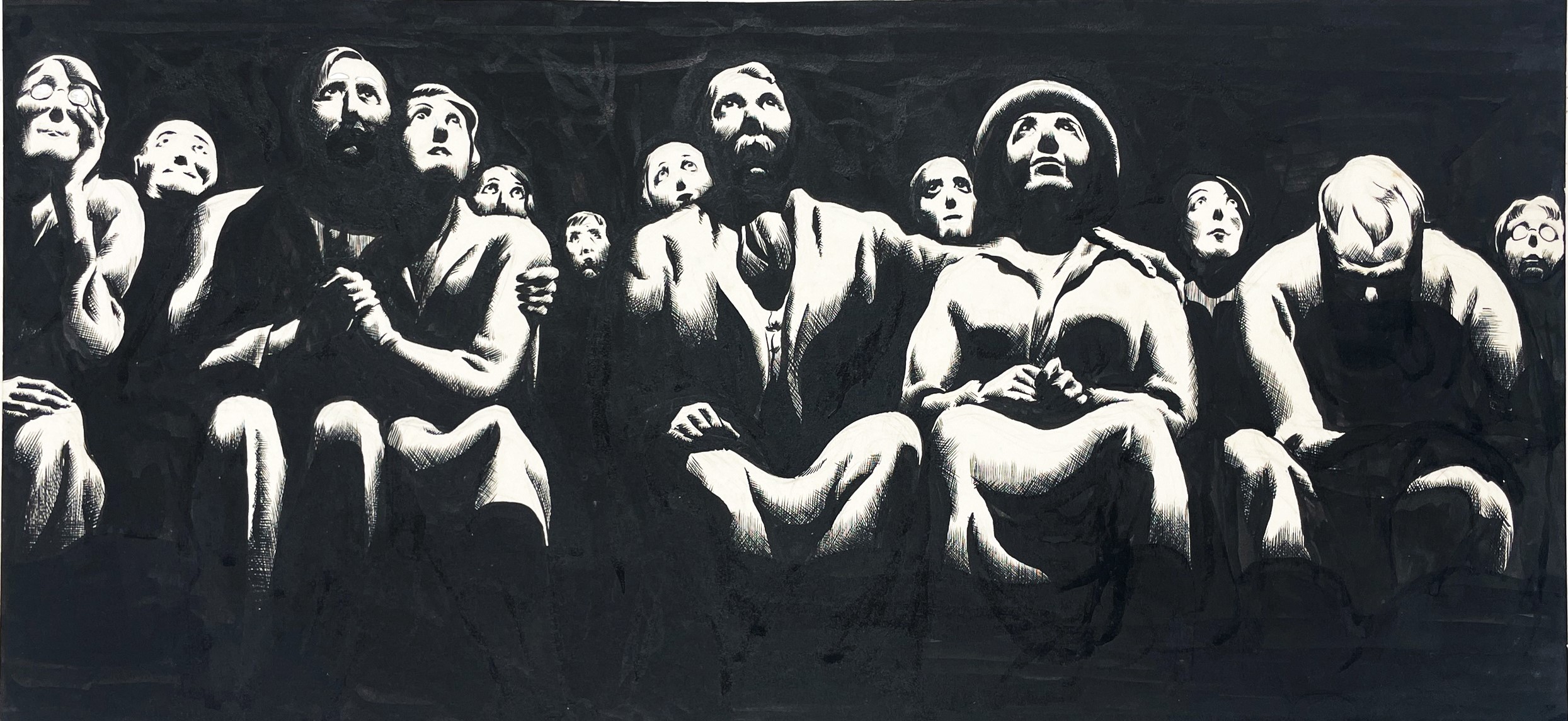
Arthur Wragg. Illustration from 'The Psalms of Modern Life'
The news, history and stories behind our art and antiques